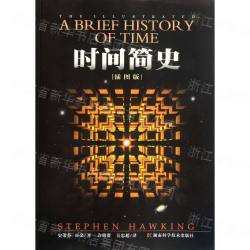-
内容大纲
本书重点介绍通信系统中各种通信信号的产生、传输和调制解调的基本理论和方法,使学生熟悉并掌握通信系统的基本理论和分析方法,为后续课程打下良好的基础。
在通信系统数学模型和相关数学工具的基础上,本书着重介绍模拟凋制系统、数字基带/频带系统、模拟信号的数字传输系统等内容,涉及经典的调制解调、编码译码方法,并注重从系统的角度进行分析和理解。全书共8章,各章之间既独立又相互联系;为了把知识点和相互关系清晰地表示出来,各章首一般都有思维导图。在学习过程中应注重学习方法和技巧的总结,从系统和全局的角度对教材进行整体把握。
本书适合电子信息、通信工程和计算机等相关专业本科生学习使用。 -
作者介绍
朱艳萍,南京信息工程大学副教授,硕士生导师。毕业于南京理工大学电子工程与光电学院,获信息与通信工程博士学位,英国雷丁大学和谢菲尔德大学访问学者,主讲“通信原理(双语)”“雷达原理(全英文)”“信号与系统(全英文)”等多门课程,长期从事信号处理的基础和应用研究。主要研究方向为雷达/通信信号处理、脑电波(EEG)情绪智能识别算法、超宽带定位及微波近距离成像等。主持并完成国家自然科学青年基金1项,主研国家重点研发计划1项、国家自然科学基金3项,发表学术论文20余篇,获授权发明专利10余项。 -
目录
Chapter 1 Introduction
1.1 Basic concepts and models of communication system
1.1.1 Communication system model
1.1.2 Analog communication model
1.1.3 Digital communication model
1.2 The classification of communication systems
1.2.1 Modulation mode
1.2.2 Division of frequency band
1.3 Information and its measurement
1.4 The main performance index of communication systems
Summary and discussion
Homework
Vocabulary
Chapter 2 Random processes
2.1 Basic concepts of random processes (definition of random processes
2.1.1 Definition
2.1.2 Numerical characteristics of a random process
2.2 Stationary random process
2.2.1 Definition
2.2.2 Ergodicity
2.2.3 Autocorrelation function of stationary random processes
2.2.4 Power spectral density
2.3 Gaussian process
2.4 Transmission of a random process through a linear time-invariant (LT) filter
2.5 Narrowband random process
2.6 Sine wave plus narrowband Gaussian noise
2.7 Gaussian white noise and band pass white noise
Summary and discussion
Homework
Vocabulary
Chapter 3 Channel
3.1 The classification of channels
3.1.1 Wireless channels
3.1.2 Wire channel
3.2 Channel models
3.2.1 Modulation channel model (训制解调模型)
3.2.2 Coling channel model(编码信道模型)
3.3 Influence of the channel characteristics on transmission (for modulation model)
3.3.1 Influence of constant parameter channel on signal transmission
3.3.2 Influence of random parameter channel of signal transmission
3.4 Channel capacity (continuous channel)
Summary and discussion
Homework
Vocabulary and terminologies
Chapter 4 Continuous-wave modulation (analog modulation system)
4.1 Introduction
4.2 Linear modulation
4.2.1 AM
4.2.2 Double-sideband modulation
4.2.3 Single-sideband modulation
4.2.4 Vestigial sideband modulation
4.3 Anti-noise performance of linear demodulation
4.3.1 Noise in linear receiver using coherent detection
4.3.2 Noise in AM receivers using envelope detection
Homework (part 1)
4.4 Angle modulation (non-linear modulation process)
4.4.1 Basic definitions
4.4.2 NBFM(窄带调频)
4.4.3 Wide-band frequency modulation (WBFM)
4.4.4 Generating an FM signal
4.4.5 Demodulation of FM signals
4.4.6 Noise in FM receivers
4.5 Frequency-division multiplexing(频分复用)
Summary and discussion
Homework (part 2)
Terminologies
Chapter 5 Pulse modulation
5.1 Sampling process
5.2 Analog pulse modulation(模拟脉冲调制)
5.3 Quantization process(量化过程)of sampled signal
5.3.1 Uniform quantization(均勾量化)
5.3.2 Nonuniform quantization
5.4 PCM(pulse code modulation,脉冲编码调制)
5.4.1 The principle of PCM
5.4.2 Noise in PCM system
5.4.3 Delta modulation(增量调制)
5.4.4 DPCM (differential pulse code modulation,差分脉冲调制)
5.5 TDM(time-division multiplexing,时分复用)
Summary and discussion
Homework
Terminologies
Chapter 6 Baseband pulse transmission
6.1 Waveform and frequency characteristics of baseband digital signal
6.1.1 Waveform of baseband digital signal
6.1.2 Symbol code types of baseband digital signals for transmission
6.1.3 Frequency characteristic
6.2 Matched filter
6.3 Error rate due to noise
6.3.1 Binary polar baseband system
6.3.2 The unipolar baseband system
6.4 Intersymbol Interference
6.4.1 Nyquist's criterion Ⅰ
6.4.2 Nyquist's criterion Ⅱ
6.5 Eye pattern
Summary and discussion
Homework
Terminologies
Chapter 7 Passband data transmission (digital passband transmission)
7.1 The basic principle of three digital passband modulation
7.1.1 ASK
7.1.2 FSK
7.1.3 PSK (absolute phase shift keying)
7.1.4 DPSK (differential PSK)
7.2 Anti-noise performance of digital passband modulation system
7.2.1 Bit error rate of ASK
7.2.2 Bit error rate of 2FSK
7.2.3 Bit error rate of PSK
7.24 Performance comparison of digital keving transmission systen
7.3 Hybrid amplitude/phase modulation schemes
7.4 OFDM system
Summary and discussion
Homework
Terminologies
Chapter 8 Further reading: new technologies in communication systems
8.1 Compressive sensing (C)
8.1.1 Introduction
8.1.2 The mathematics theory
8.1.3 Application
8.2 Ultra wideband (UWB) system
8.2.1 The definition of UWB
8.2.2 Comparison with other wireless communications
8.2.3 Feature of UWB
8.2.4 Impulse modulation signal in UWB signal
8.2.5 The application of UWB
8.3 MIMO technology
8.3.1 The model of MIMO
8.3.2 Applications
附录A MATLAB 仿真实验
Experiment 1 Continuous-wave modulation (corresponding to Chapter 4)
Experiment 2 Pulse modulation (corresponding to Chapter 5)
Experiment 3 Digital passband transmission(corresponding to Chapter 7)
附录B 实验箱实验
实验一 各种模拟信号源实验
实验二 脉冲编码调制PCM
实验三 AMI/HDB3编码和译码过程实验
实验四 FSK调制解调实验
实验五 通信系统综合实验
附录C 误差函数表
参考文献
同类热销排行榜
- C语言与程序设计教程(高等学校计算机类十二五规划教材)16
- 电机与拖动基础(教育部高等学校自动化专业教学指导分委员会规划工程应用型自动化专业系列教材)13.48
- 传感器与检测技术(第2版高职高专电子信息类系列教材)13.6
- ASP.NET项目开发实战(高职高专计算机项目任务驱动模式教材)15.2
- Access数据库实用教程(第2版十二五职业教育国家规划教材)14.72
- 信号与系统(第3版下普通高等教育九五国家级重点教材)15.08
- 电气控制与PLC(普通高等教育十二五电气信息类规划教材)17.2
- 数字电子技术基础(第2版)17.36
- VB程序设计及应用(第3版十二五职业教育国家规划教材)14.32
- Java Web从入门到精通(附光盘)/软件开发视频大讲堂27.92
推荐书目
-

孩子你慢慢来/人生三书 华人世界率性犀利的一枝笔,龙应台独家授权《孩子你慢慢来》20周年经典新版。她的《...
-

时间简史(插图版) 相对论、黑洞、弯曲空间……这些词给我们的感觉是艰深、晦涩、难以理解而且与我们的...
-

本质(精) 改革开放40年,恰如一部四部曲的年代大戏。技术突变、产品迭代、产业升级、资本对接...

 [
[
